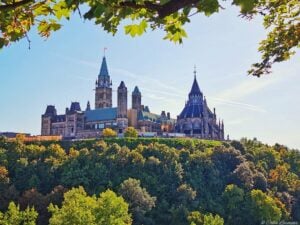When David Suzuki began leading the charge on the Blue Dot campaign, he knew he had to make some changes from previous tours he’d been on. In an interview with Canadian Geographic, Suzuki explains that while his previous tours were very popular, they lacked an action plan for viewers to execute after the show was over and everyone had gone home.
So, to ensure that the Blue Dot project resulted in the grassroots movement he was hoping for, Suzuki enlisted the help of an Obama campaigner who had helped the president win Florida. They used a strategy developed at Harvard University by an expert on community organizing named Marshall Ganz.
Suzuki explains his adaptation of the strategy as such:
“We’ve hired people across the country and are training them on how to start a grassroots movement. The idea is that at municipal levels, these people will go back to their hometowns and recruit more people. Then two provinces will take the lead at the provincial level, and then those two provinces will influence the other provinces, until we have seven (enough to change the charter). Long term will be federal.”
Suzuki’s approach is indicative of a wider strategy among NGOs that involves spending less time campaigning federal politicians and bringing it back to the people.
As for the Blue Dot project, Suzuki hopes to see some sort of progress after three years’ time.
“If it explodes as we hope it will, it’s going to be autocatalytic. I think Canadians are ready for it. They love the natural beauty of Canada, they think that’s a part of who they are, and want to protect it.”





